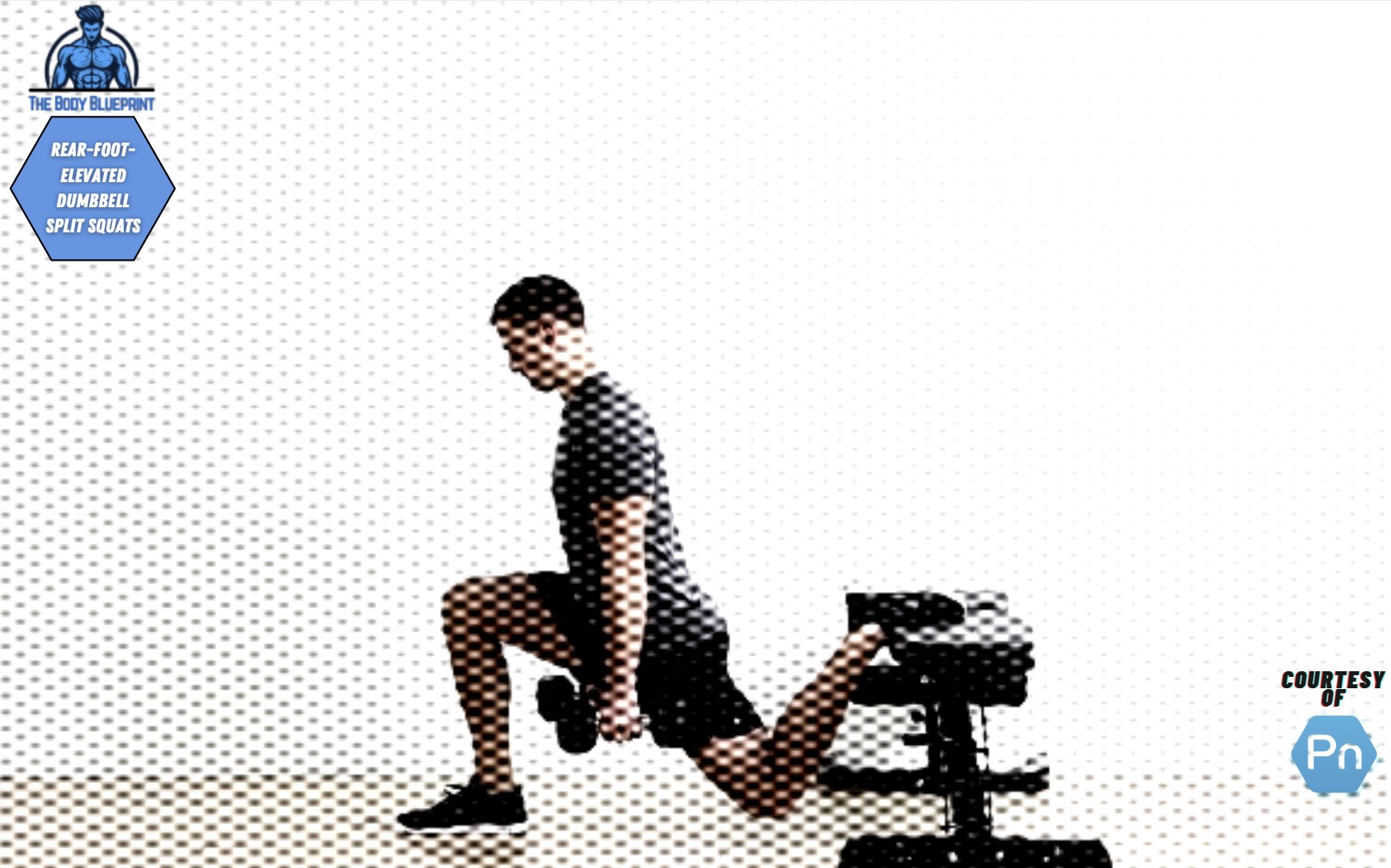If you want legs that command respect, it’s time to embrace the rear-foot-elevated dumbbell split squat (aka the Bulgarian Split Squat). This move isn’t just a leg day filler—it’s the heavyweight champ of unilateral training. When you do it right, you’ll build quads, glutes, and core strength that’ll make squatting and deadlifting feel like a warm-up.
Why Every Man Needs This Move in His Arsenal
- Single-Leg Supremacy: Targets imbalances and increases leg strength symmetrically.
- Glute Dominance: Elevate your rear foot, and watch your glutes step up (literally).
- Core Activation: This ain’t no mindless squat machine—you’ll engage your abs to stay stable.
- Compact Gains: Don’t have a squat rack? A pair of dumbbells and a sturdy surface are all you need.
Gear Up: What You’ll Need
Before you start, gather your arsenal:
- Dumbbells: Go heavy enough to challenge yourself but light enough to maintain form.
- Bench or Step: Aim for a height just below knee level.
- Grip Game Strong: Use chalk or straps if your grip fades faster than your legs.
Step-By-Step Execution
Ready to elevate? Here’s how to master this move:
1. Set Up Like a Pro
- Position a bench or box behind you.
- Stand about 2-3 feet in front of the bench.
- Grab a dumbbell in each hand with a neutral grip (palms facing your body).
2. Find Your Sweet Spot
- Place your rear foot on the bench.
- Pro Tip: Rest your laces flat for comfort.
- Ensure your front foot is far enough forward so that your knee doesn’t track over your toes.
3. Lower With Purpose
- Engage your core and drop your back knee toward the ground.
- Keep your chest tall, shoulders back, and eyes forward.
- Go deep until your front thigh is parallel to the floor.
4. Drive It Home
- Press through your front heel to stand back up.
- Squeeze your glutes hard at the top.
Form Tips to Prevent Rookie Mistakes
- Don’t Rush It: Control the descent to protect your knees and boost gains.
- Stay Balanced: Keep your weight in your front heel—not your toes.
- Core On Lock: Brace as if someone’s about to punch you in the gut.
Table: Muscle Breakdown for Rear-Foot-Elevated Dumbbell Split Squats
| Primary Muscles Worked | Secondary Muscles | Stabilizers |
|---|---|---|
| Quads | Glutes | Core |
| Glutes | Hamstrings | Adductors (Inner Thigh) |
| Calves | Lower Back |
Progression and Regression: Adjust to Your Level
Not ready to crush 50-pound dumbbells yet? Or maybe bodyweight squats don’t cut it anymore? Here’s how to tweak it:
For Beginners
- Start with bodyweight only.
- Use a lower surface for rear-foot elevation.
For Intermediate Lifters
- Add light-to-moderate dumbbells.
- Incorporate a tempo: 3 seconds down, 1 second up.
For Advanced Lifters
- Go heavy with dumbbells or a barbell.
- Add a pulse at the bottom for extra burn.
Programming This Move Like a Boss
You don’t want to just wing it. Here’s how to incorporate these into your routine:
- Strength-Focused: 3-4 sets of 6-8 reps per leg. Heavy and slow.
- Hypertrophy (Size Gains): 3-4 sets of 8-12 reps per leg. Moderate weight.
- Endurance/Conditioning: 3 sets of 15-20 reps per leg. Light and fast.
Q&A: Split Squat Secrets Revealed
Q: Why does my rear leg cramp up during this exercise?
A: You’re likely putting too much weight on your rear leg. Shift more of the load onto your front leg, and make sure your hips are square. Stretching your quads beforehand can also help.
Q: How do I keep my balance?
A: Focus on a fixed point in front of you (not the mirror). Also, keep your core braced and grip those dumbbells tightly—it all adds up.
Q: Can I do this with a barbell instead of dumbbells?
A: Absolutely. The barbell version shifts the center of gravity, making it slightly harder on your core but easier on your grip.
Q: Is this better than regular squats?
A: Not better—just different. Rear-foot-elevated split squats isolate one leg at a time, making them great for fixing imbalances and targeting specific muscles.
Table: Comparison of Rear-Foot-Elevated Split Squat vs. Traditional Squat
| Feature | Rear-Foot-Elevated Split Squat | Traditional Squat |
|---|---|---|
| Unilateral Strength | Yes | No |
| Core Engagement | High | Moderate |
| Equipment Needed | Dumbbells, Bench | Barbell, Squat Rack |
| Accessibility for Beginners | Moderate | High |
| Risk of Overloading Lower Back | Low | Higher |
Wrap It Up and Level Up
Rear-foot-elevated dumbbell split squats will humble you. They’ll challenge your strength, balance, and ego, but they’ll also deliver results that can’t be ignored. Add them to your leg day arsenal, and soon, your legs won’t just carry you—they’ll carry your reputation.
Now, grab those dumbbells, set up that bench, and make every rep count. Your future self with those tree-trunk thighs? He’ll thank you.

